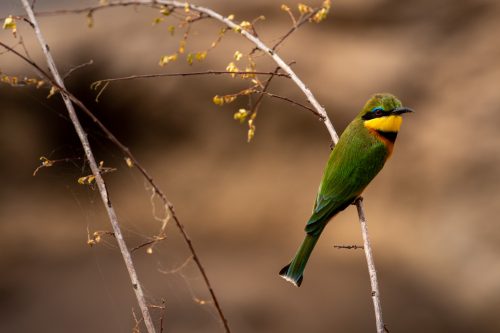
Every year the migration unfolds in a unique way. From the time the zebra and wildebeest first arrive in the Mara, to their movements in general throughout this northern reach of their annual circuit, to when they dramatically start crossing the river in massive numbers; no two years are alike.
Given Adam’s exciting blog from last week, highlighting the arrival of the first big herds, I was itching to get out and enjoy my first drives with them this year. Alas – as you’ll see from the images below, wildebeest didn’t feature much this week. It’s not that they’ve disappeared; rather, they’ve just retreated deeper into the main reserve as they wait for hundreds of thousands more to cross the Tanzanian border to join them. They’ll be pouring across the Mara River into the Triangle in no time.
But by no means was the lack of wildebeest a disappointment during my drives – there was still plenty to see, including some exciting zebra river crossings. But most of all, I was reminded that even in the middle of the Great Migration, when wildebeest are the main attraction, there is still so much else to see. Even during the epitome of Mara drama – a river crossing – it’s important to be aware of what else is around. For instance, had I been focused solely on the zebra as I waited for them to take the plunge, I never would have noticed the stunning little bee-eater above that kept me company the entire time.
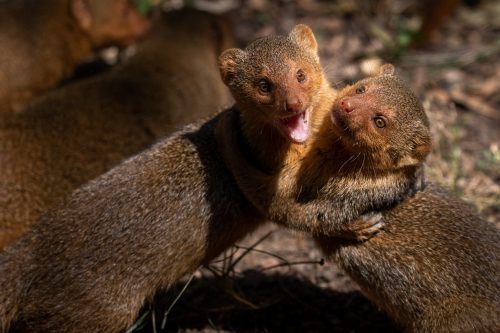
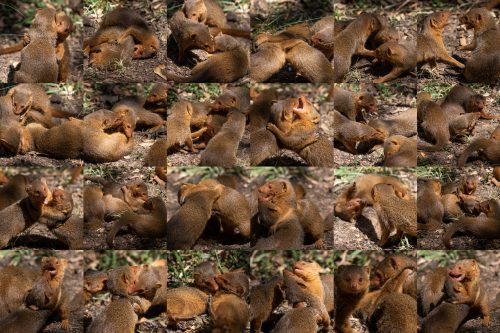
Even in my garden there are things to keep me entertained during the Migration, such as our resident family of dwarf mongooses. They are endlessly amusing little creatures, and I spent a good half hour watching them playfully wrestle beneath my window one sunny afternoon.
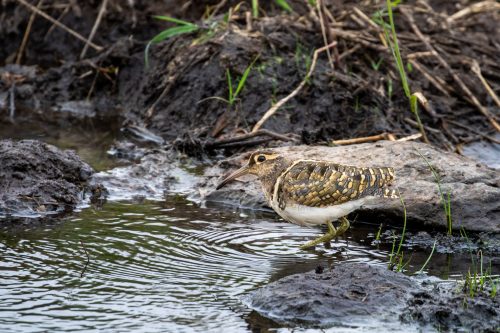
Always an exciting find, this scarcely encountered curious little bird is called a greater painted-snipe. They are unusual in that they exhibit reverse sexual dimorphism – that is, the female is more ornately plumaged and brightly colored than the much duller male (shown here).
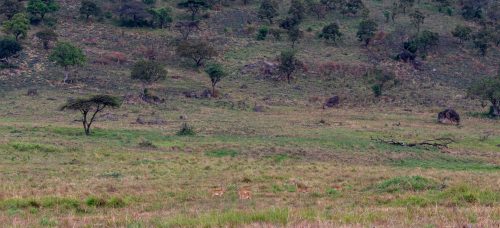
Just yesterday, Shannon and I were lamenting how we hadn’t seen any oribi in ages. Lo and behold, the next day, I saw no fewer than seven, including the five in this stitched pano – can you find them all?
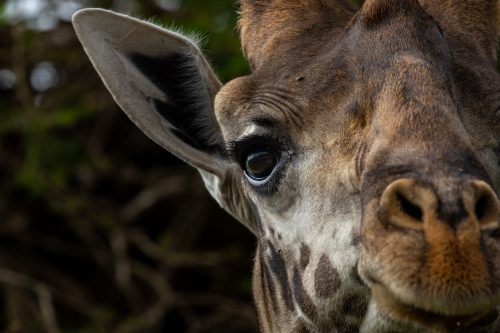
Ever the challenging subject, this giraffe obliged and didn’t move a muscle as I drove right past, allowing me the opportunity to study its visage.
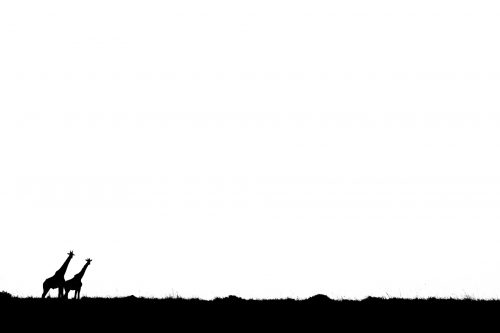
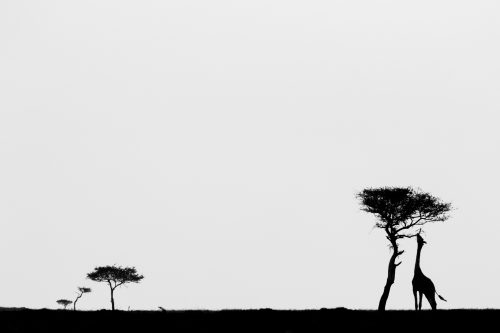
Midday sun on the equator is a challenge for photography. The light is harsh and everything is in high contrast. Both these photos, coincidentally taken a few miles apart but only a few minutes apart, are artistic edits of photographs that don’t otherwise offer much aesthetically because of the incredibly harsh midday lighting conditions.
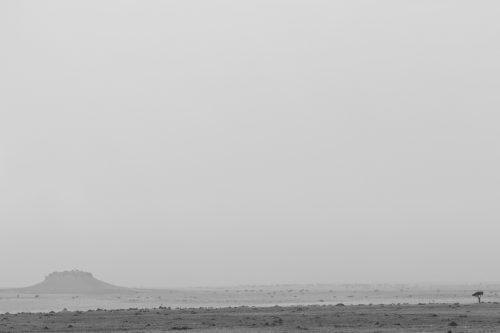
Another example of working with the harsh midday light by converting to black and white in an attempt to accurately portray the sense of blinding light and heat that define the zenith of the equatorial African sun.
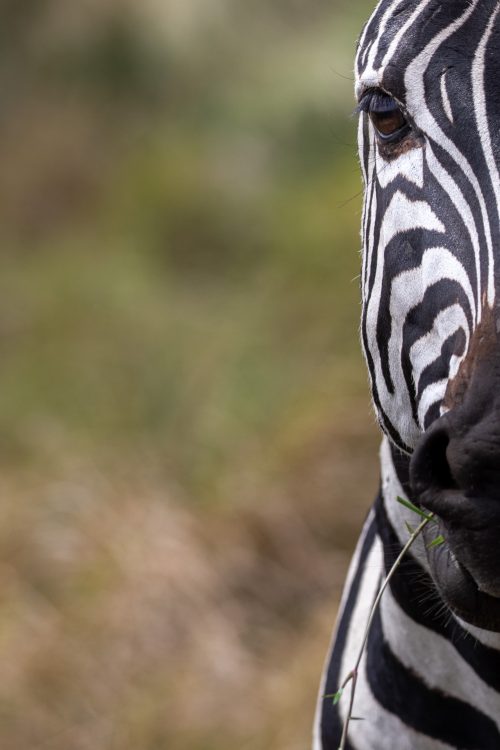
Zebra are often tricky beasts to photograph; they rarely behave. If one is close to the road and you think to yourself “what a perfect opportunity for a photographic study of this iconic animal,” as soon as you slow down alongside it, it will unfailingly turn its head and plod off. Great for bum shots, not great for anything else. In an attempt to outwit a roadside zebra this week, I took this shot on the fly, which turned out delightfully artistic with a little strategic cropping.
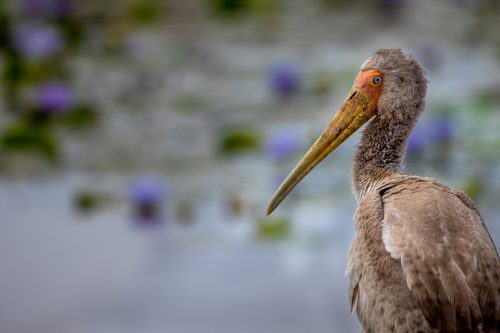
The colours of this young yellow-billed stork, juxtaposed to blossoming purple lilies in a roadside dam, caught my eye.
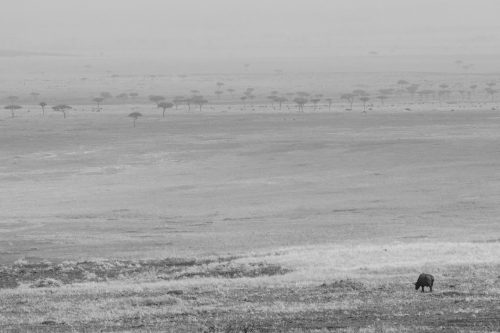
Another midday photo, again converted to black and white to make the most of the light conditions and convey a sense of afternoon heat across the landscape, using the lone buffalo as a subject.
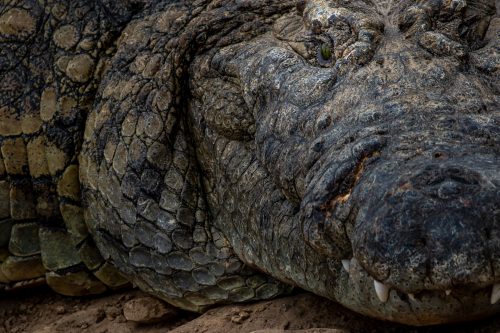
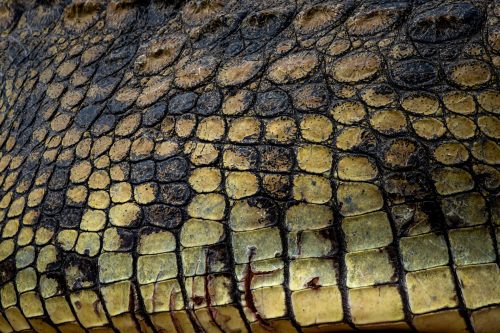
Pulling up to Main Crossing in anticipation of the staging zebra on the other side of the river, it took me several minutes to notice this enormous crocodile lounging on the bank directly beneath me – again a reminder of the importance to look around and not focus solely on one thing. As I waited for the zebra to cross, I seized the opportunity to study this magnificently gnarly dinosaur.
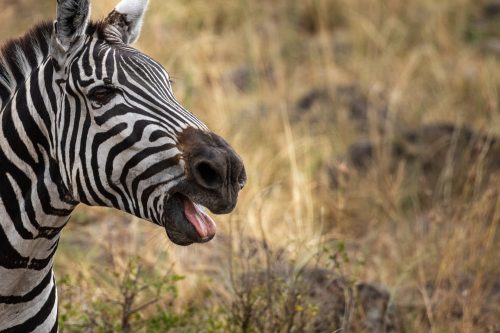
The zebra crossings I witnessed this week were chaotic and perplexing, if short and mostly uneventful. The first crossing occurred when a group of seven appeared out of nowhere from behind me and immediately dove in and crossed to the other side where the much larger herd was staging. This encouraged that herd to test the waters and suddenly a couple dozen from the larger herd then swam the opposite direction to the Triangle side. A male from this group, pictured above, realised he’d left a loved one on the other side and began braying incessantly, before retracing his swim and going for a solo lap of the river to rejoin his crew on the side he started from. Bewildering.
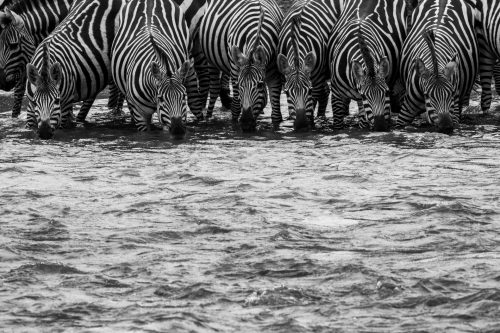
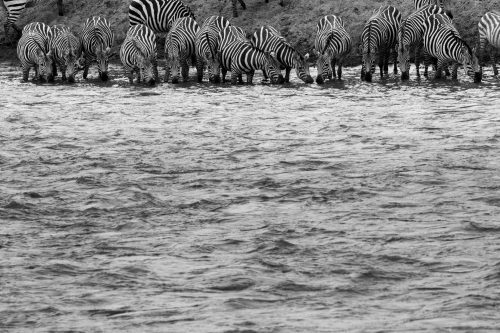
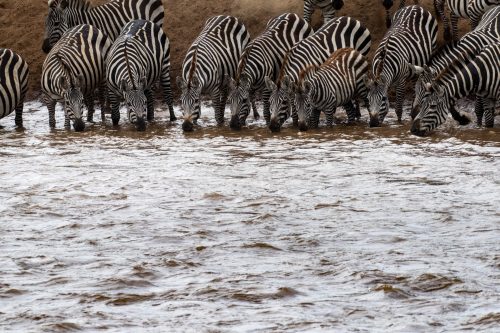
As the herd staged, it offered a great opportunity to try and capture the symmetry and aesthetic of zebra lining up to drink. I never quite got what I was hoping for, but these shots were a few of the closest.
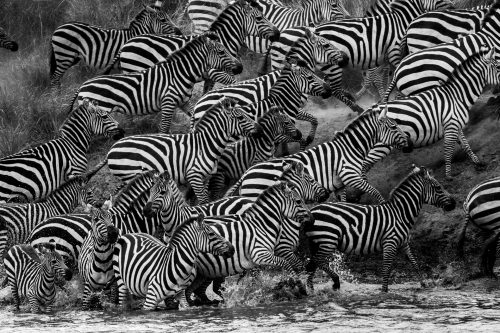
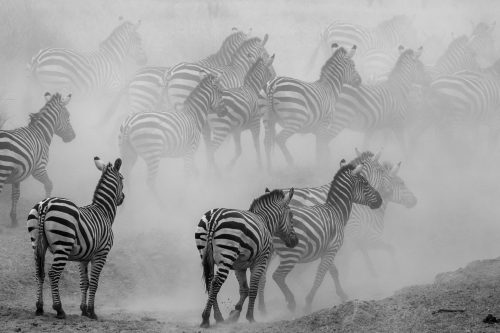
Zebra can be easy to spook when they’re drinking – all it takes is the unexpected splash of a misplaced step or even the panicked twitch of an ear, and they all take off running.
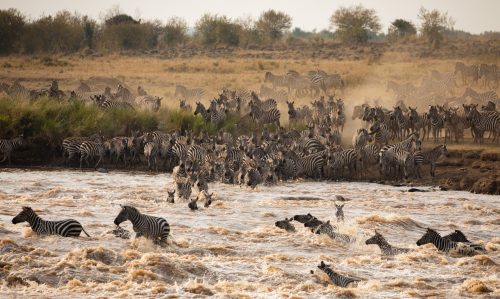
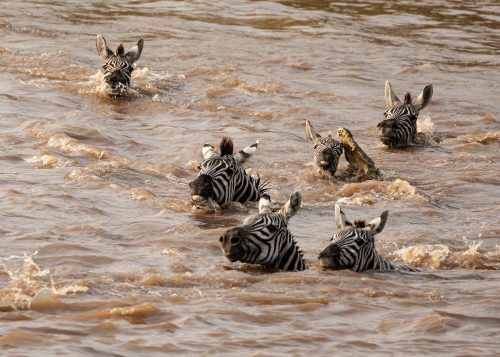
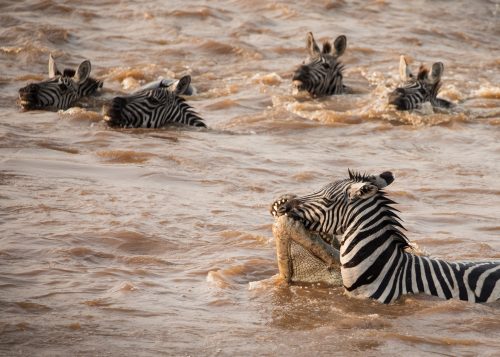
Adam also witnessed some zebra crossings this week, quite a bit more dramatic than mine. It seems the crocodiles ate well during the crossings Adam saw, and were so well fed by the time I saw a crossing that they couldn’t be bothered. Adam also captured some rather unusual interaction between hippos and zebra, including the two photographs below: one showing a hippo aggressively chasing a zebra, the other of a hippo with the stolen spoils of a crocodile (hippos are known to occasionally feed on carcasses, presumably for nutrients otherwise lacking in their diet). [f 5.6, 1/640, ISO 800, +0.33]
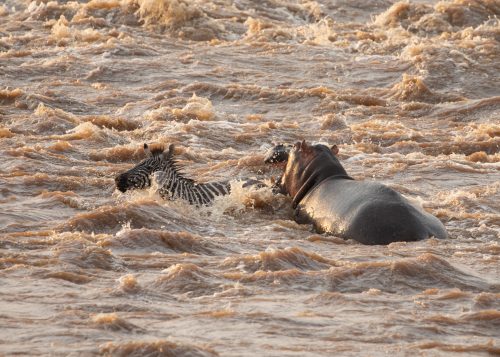
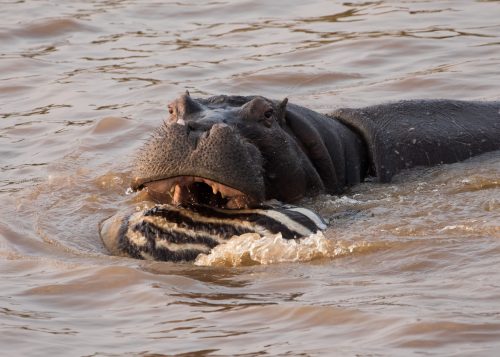
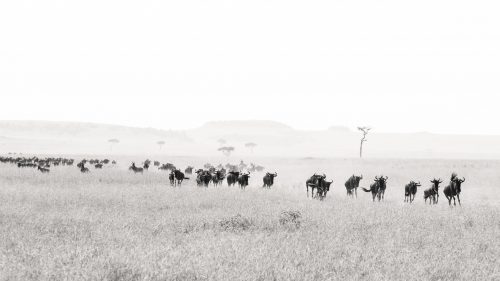
This week a year ago, the wildebeest were full on, with dramatic river crossings and vast herds in every direction. Similar to a couple of the photographs above, Adam captured this fantastic midday shot of a herd of wildebeest galloping across the plains in the harsh sunlight and used a black-and-white conversion to make the most of difficult lighting conditions.
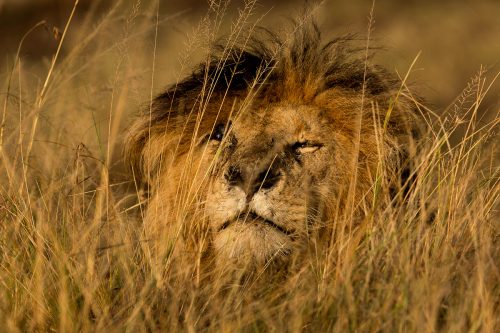
What a blog from two years ago: featuring a beautiful study of light, surreal thunderstorms, a leopard cub, storks devouring fish, impressively muddy buffalo, dramatic river crossings, hunting cheetah, beautiful patterns of migrating wildebeest, and perhaps most exciting of all: Scar. Coincidentally, after nary a sighting for the last several months, I was shown a picture of Scar taken just a few days ago. The legend lives.
Filed under: This Week at Angama
Subscribe for Weekly Stories
Comments (2):
1 August 2020
I had a vivid experience of being back at Angama . Thank you Tyler
31 July 2020
Absolutely amazing zebra photos!!!
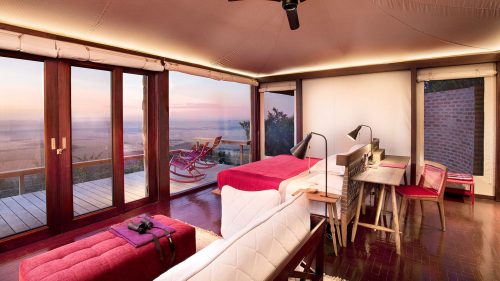
Tented Suites